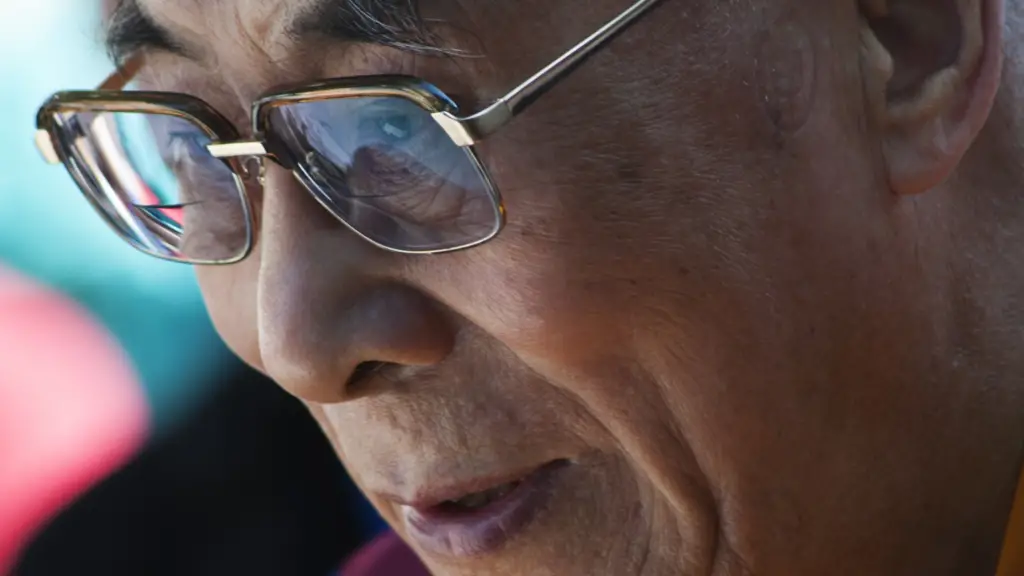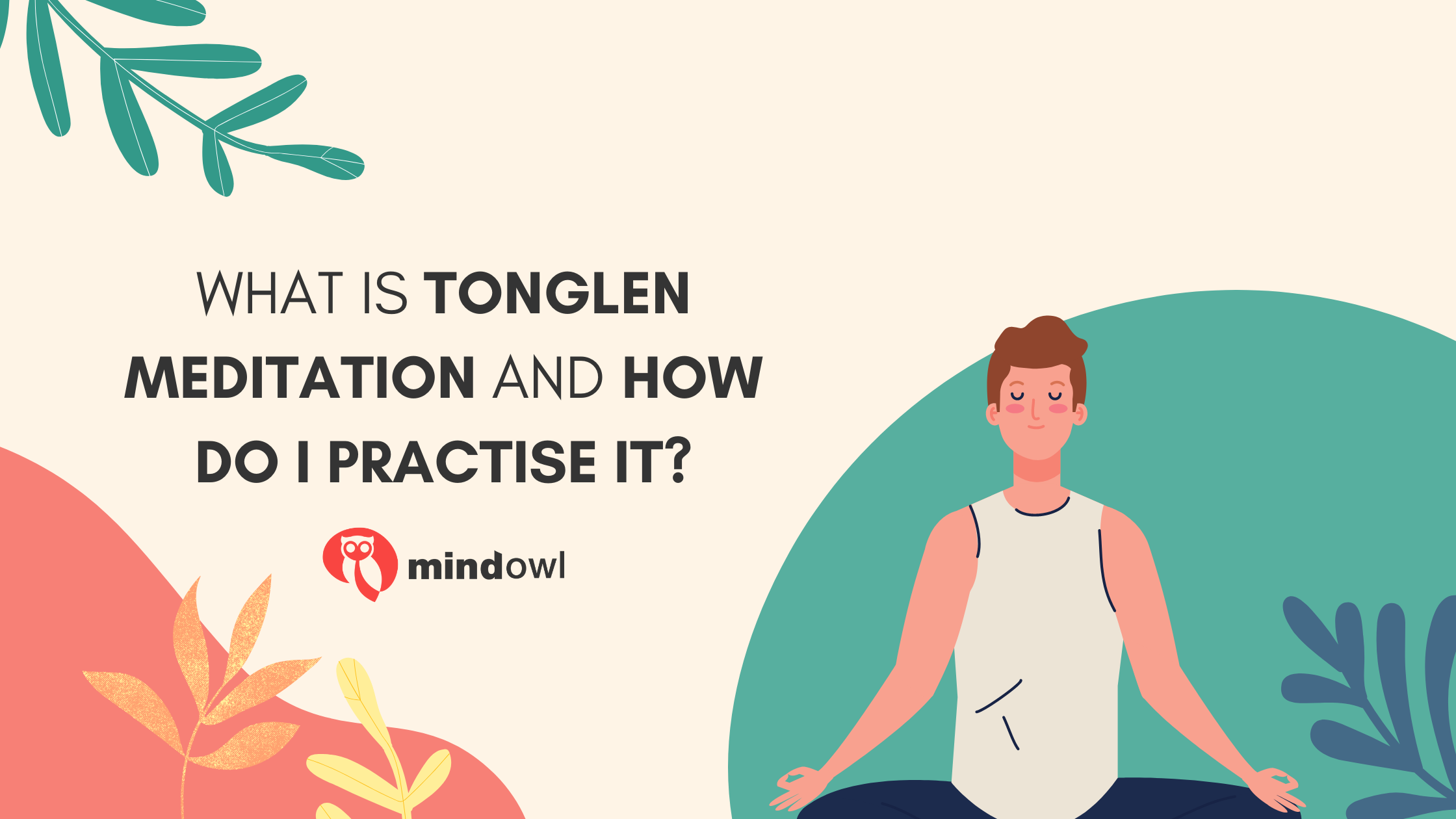Ancient Buddhist practices represent the root of most modern forms of meditation. However, many meditation styles are no longer guided by a spiritual path, having been adopted within various therapeutic or secular contexts because of their ability to foster calmness, peace of mind, and emotional intelligence. This is certainly true of the art of Tonglen Meditation, a thousand-year-old practice based on laying the foundations for compassion both in your meditation and across your life. But what does Tonglen meditation mean, and how should it be practised? Today, we’ll take you through the basics, and give you everything you need to have a go at this unique method.
What is compassion meditation?
Most spiritual practices within Buddhism are shaped by a commitment to growing compassion, and Tonglen is no exception. An ancient practice which revolves around cultivating compassion through visualisation, Tonglen derives from the Lojong (meaning ‘mind training’) branch of Tibetan Buddhism, which involves meditation, contemplation, and compassion.
The word Tonglen, or Tong Len, is Tibetan for “Sending and Taking”, with Tong meaning “giving or sending” and Len referring to “receiving or taking”. This reflects the practice’s interest in taking in pain and giving out compassion, with the goal of connecting with personal suffering and overcoming fear. This is founded upon the principle of changing our perception and attitude towards pain – for more on the difference between pain and suffering, check out our article on the subject.
Historically, Tonglen Meditation has links to the leprosy crisis which swept Tibet in the 11th century. With disease rampant across the country, meditation masters began using Tonglen as a distant healing technique for those who were ill. As this suggests, the practice contains parallels with Loving-Kindness Meditation (also known as Metta Bhavana). What makes this Tibetan Meditation different is that it involves specifically visualising giving out whatever it is that will ease suffering. As such, we can train the mind to turn a negative (suffering) into a positive (the cure for that suffering).
This may come across as slightly at odds with the popular self-help mantra of ‘I need to look after myself’; however, this kind of compassion meditation actually shows that often the best way to be kind to yourself is to develop an eagerness and ability to help others. This idea has been referred to as wise selfishness, or intelligent selfishness. But what does that term actually mean?

How to be intelligently selfish
One of the Dalai Lama’s more surprising philosophical takes revolves around the idea of wise or intelligent selfishness. In his 1996 book ‘The Way to Freedom’, he said “If you would like to be selfish, you should do it in a very intelligent way. The stupid way to be selfish is… seeking happiness for ourselves alone. The intelligent way to be selfish is to work for the welfare of others.” You may be surprised to hear such a respected world leader in meditation, mindfulness and spiritualism come out in support of selfishness; however, this idea actually redefines the term completely.
Rather than understanding selfishness as lacking consideration for others and being concerned only with personal gain and pleasure, the Dalai Lama sees it as doing the things which will contribute towards a genuinely happy and meaningful life. This includes fostering a sense of well-being and mindfulness, striving for physical and mental health, and developing meaningful connections with others. In other words, doing what’s best for others is the same as doing what’s best for yourself. This concept is closely linked to Tonglen, a form of meditation which works to foster inner peace of mind, calmness and well-being by extending compassion towards others.

What are the benefits of Tonglen Meditation?
Based on contemplation, meditation, and active compassion, Tonglen trains the mind to be more empathetic and aware. It revolves around acceptance, one of the key components of mindfulness. ‘Tonglen’ has also been translated as the equivalent of “let go and accept”, an idea which reinforces the importance of letting go within meditation practice.
By closing your eyes and thinking about people who are suffering, you are cultivating feelings of compassion and kindness towards them, which over time will become a part of your daily life. By the same token, Tonglen meditation reduces practitioners’ sense of ego and self-obsession. Turning your focus towards the experiences of others can help make you more grateful for what you have in life. And as suggested in the previous section, cultivating compassion towards other people is also a fantastic way to enhance your sense of self-acceptance and self-esteem.
The practice also forces you to anchor yourself in the present moment during experiences of pain and suffering, which goes against our unhelpful tendency to avoid difficult emotions and unwelcome situations, rather than face them head-on. This process can help relieve your own feelings of guilt, fear, and anxiety in relation to those who you know, see, or hear about who are experiencing personal pain or hardship.
How do you practise Tonglen Meditation?
Like many forms of Buddhist meditation, Tonglen is based upon breath awareness, and the connecting of breath and intention. The practice uses analytic meditation techniques which combine elements of compassion and Loving-Kindness meditation with a steady focus on in and out-breaths. After choosing a specific object of compassion to represent the focus of your visualisation, you’ll seek to link your compassion meditation to your breath, and give yourself a structure for the session.
Tonglen meditation centres on imagining that as we breathe in we are taking away the suffering of a particular individual, group, nation, or animal. Then, as we breathe out, we imagine that we are sending out positive energy, comfort and happiness to that targeted object of meditation. Visualising inhaling the pain of others and sending out whatever may benefit them can help grow feelings of compassion towards others, while simultaneously countering patterns of selfishness. It’s important to note that while Tonglen is often seen as a formal meditation practice, it can also be done on the spot, at any time. If you encounter distressing or unwelcome situations in everyday life (for instance, if you see someone suffering while at work), visualising taking in their pain and breathing it out can be a great way of combating negative energy and fear of suffering in the present moment.
What is the process of Tonglen meditation?
Meditation teacher Pema Chödrön is one of the most renowned advocates of Tonglen meditation, having learned the method from the late great Tibetan meditation master Chogyam Trungpa Rinpoche. According to Chödrön, formal practice has four main stages.
1. Flash on Bodhichitta – Rest your mind for a couple of seconds in a state of stillness or openness – this is described as flashing on Bodhichitta, a term which refers to an awakened heart-mind.
2. Begin Visualising – Work with the textures around you, taking deep breaths while visualising heat, darkness, black smoke and heaviness, before breathing out feelings of coolness, darkness, and light. Here, the aim is to take in negative energy and radiate positivity – picture yourself using your positive intention and basic goodness to transform the darkness entering your body into bright, soothing beams of light.
3. Get personal – Focus on a painful situation that’s personal to you, for instance thinking about someone you care about and want to help. You can also practise cultivating positive emotions to counter any pain you’re feeling yourself, breathing in feelings of inadequacy, for example, and breathing out confidence and self-assurance.
4. Expand your compassion – Make your breaths deeper and longer, taking in and sending out more. Try to feel more compassion, more kindness, and more positivity towards whoever the subject of your meditation is. Try to cultivate forgiveness and reduce judgement for others – this is a great way to stay focused on the core values of mindfulness.
For more instruction from Pema Chödrön, check out her guided meditation here. Alternatively, here’s a Tonglen Meditation script you can use at home today…
Try this Tonglen Meditation script
As you would with most meditation sessions, begin by checking in with the mind, noticing your current mental activity and setting your intention to practice well. Take some tranquil breaths, breathing deeply and evenly into your belly. Next, close your eyes, if you feel comfortable doing so.
This method can be split into three main steps. First, picture a person, a group, or even an animal that needs help. This could be someone undergoing cancer treatment, children who have been bereaved, homeless people, mistreated animals, or any other living being that is suffering. Take time to bring that object of meditation into your mind.
Next, visualize that you’re taking in the suffering from this group or individual on each inhale, breathing in through the nose with the intention that you can remove all their suffering by inhaling it in. Practise this for a minute, trying hard to cultivate feelings of compassion towards your intended target.
Finally, exhale and breathe out, imagining that you’re sending positive emotions, energy and aid to that group or individual, as a way of offering a form of distant healing. You might imagine that your exhale is sending out peace, warmth and shelter, or food and safety, depending on the object of your meditation. Keep this idea in mind for at least a minute.
Continue this pattern, inhaling away the suffering, before exhaling out positivity. As you continue practising, you can either stick with whatever group or individual you’ve chosen or pick another one to direct your well wishes towards. Within Tonglen practice, it’s important to recognize the difference between compassion and pity. You should feel no pity here, just a strong desire for this group or individual to be well.
When you’re ready, slowly transition out of the meditation, opening your eyes and returning to the room around you. Tonglen can be a powerful practice, as it involves you thinking hard about other people’s quality of life or experience of suffering; so if it takes time to transition back to normality, don’t worry.

Does Tonglen really work?
The idea of breathing in suffering and breathing out joy may seem ridiculous at first, and it’s important to remind yourself that this kind of meditative experience isn’t a substitute for genuine action. However, it is a highly effective exercise for building compassion and kindness, which are exactly the qualities that will motivate you to transition from thinking about those who are suffering to taking action to help them. Mind training techniques which cultivate positive emotions like this can recondition your psychology, making you more caring, compassionate, and virtuous, and less self-absorbed (organisations like the Compassion Institute are committed to showing this). While the idea of deliberately imagining the suffering of others (including loved ones) may seem scary or anxiety-inducing, it’s highly likely that Tonglen meditation will enhance your mental and emotional health and broader quality of life, rather than do the opposite.
Hopefully, this blog post has given you a strong introduction to the benefits of compassion meditation styles like Tonglen, as well as offering practical guidance on what a typical session might look like. We’ve explored how Tonglen meditation practice can make us less self-centred and more focused on our shared humanity and capacity to overcome problems, a change in perspective which is bound to give practitioners greater peace of mind and quality of life. We’ve also discussed how this kind of compassion meditation exercise can be practised within your everyday life – so if you can’t find the time for formal practice, there are other alternatives. If you want to utilise the powers of meditation to increase your sense of compassion, both for yourself and others, Tonglen could be the perfect form of meditation for you. To find out more about related methods such as Loving-Kindness meditation, check out our article on the six main types of meditative practice.
MindOwl Founder – My own struggles in life have led me to this path of understanding the human condition. I graduated with a bachelor’s degree in philosophy before completing a master’s degree in psychology at Regent’s University London. I then completed a postgraduate diploma in philosophical counselling before being trained in ACT (Acceptance and commitment therapy).
I’ve spent the last eight years studying the encounter of meditative practices with modern psychology.



One thought on “What is Tonglen meditation and how do I practise it?”